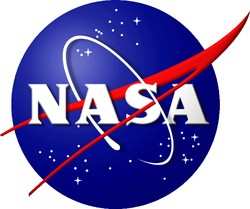Wed, Aug 03, 2011
First Time Molecular Oxygen Has Been Detected Beyond Our
Atmosphere
The Herschel Space Observatory's large telescope and
state-of-the-art infrared detectors have provided the first
confirmed finding of oxygen molecules in space. The molecules were
discovered in the Orion star-forming complex. Individual atoms of
oxygen are common in space, particularly around massive stars. But,
molecular oxygen, which makes up about 20 percent of the air we
breathe, has eluded astronomers ... until now.

"Oxygen gas was discovered in the 1770s, but it's taken us more
than 230 years to finally say with certainty that this very simple
molecule exists in space," said Paul Goldsmith, NASA's Herschel
project scientist at the agency's Jet Propulsion Laboratory (JPL)
in Pasadena, Calif. Goldsmith is lead author of a recent paper
describing the findings in the Astrophysical Journal. Herschel is a
European Space Agency-led mission with important NASA
contributions.
Astronomers searched for the elusive molecules in space for
decades using balloons, as well as ground- and space-based
telescopes. The Swedish Odin telescope spotted the molecule in
2007, but the sighting could not be confirmed. Goldsmith and his
colleagues propose that oxygen is locked up in water ice that coats
tiny dust grains. They think the oxygen detected by Herschel in the
Orion nebula was formed after starlight warmed the icy grains,
releasing water, which was converted into oxygen molecules. "This
explains where some of the oxygen might be hiding," said Goldsmith.
"But we didn't find large amounts of it, and still don't understand
what is so special about the spots where we find it. The universe
still holds many secrets."
The researchers plan to continue their hunt for oxygen molecules
in other star-forming regions. "Oxygen is the third most common
element in the universe, and its molecular form must be abundant in
space," said Bill Danchi, Herschel program scientist at NASA
Headquarters in Washington. "Herschel is proving a powerful tool to
probe this unsolved mystery. The observatory gives astronomers an
innovative tool to look at a whole new set of wavelengths where the
tell-tale signature of oxygen may be hiding."
Herschel is a European Space Agency cornerstone mission, with
science instruments provided by consortia of European institutes.
NASA's Herschel Project Office is based at JPL, which contributed
mission-enabling technology for two of Herschel's three science
instruments. The NASA Herschel Science Center, part of the Infrared
Processing and Analysis Center at the California Institute of
Technology in Pasadena, supports the U.S. astronomical community.
Caltech manages JPL for NASA.
More News
Local Airport Advisory (LAA) A service available only in Alaska and provided by facilities that are located on the landing airport, have a discrete ground-to-air communication freq>[...]
Also: Cosmonaut Kicked Out, Airbus Scales Back, AF Silver Star, Russian A-60 Clobbered A Samaritan’s Purse humanitarian flight was hijacked on Tuesday, December 2, while atte>[...]
Aero Linx: Michigan Helicopter Association (MHA) The Michigan Helicopter Association (MHA) exists to bring together people who share an interest in helicopters, including private, >[...]
Also: Airbus Acquisition, USCG Helo Sniper, Remember Pearl Harbor, New Thunderbird 1 Gulfstream’s newest addition to its next-gen lineup, the super-midsize G300, is officiall>[...]
Also: Electra Goes Military, Miami Air Taxi, Hypersonics Lab, MagniX HeliStrom Amazon’s Prime Air drones are back in the spotlight after one of its newest MK30 delivery drone>[...]
 ANN's Daily Aero-Term (12.14.25): Local Airport Advisory (LAA)
ANN's Daily Aero-Term (12.14.25): Local Airport Advisory (LAA) Airborne 12.08.25: Samaritans Purse Hijack, FAA Med Relief, China Rocket Fail
Airborne 12.08.25: Samaritans Purse Hijack, FAA Med Relief, China Rocket Fail ANN's Daily Aero-Linx (12.15.25)
ANN's Daily Aero-Linx (12.15.25) Airborne 12.10.25: New Gulfstream, ATC Integrator, Outrageous FFZ User Fees
Airborne 12.10.25: New Gulfstream, ATC Integrator, Outrageous FFZ User Fees Airborne-NextGen 12.09.25: Amazon Crash, China Rocket Accident, UAV Black Hawk
Airborne-NextGen 12.09.25: Amazon Crash, China Rocket Accident, UAV Black Hawk



